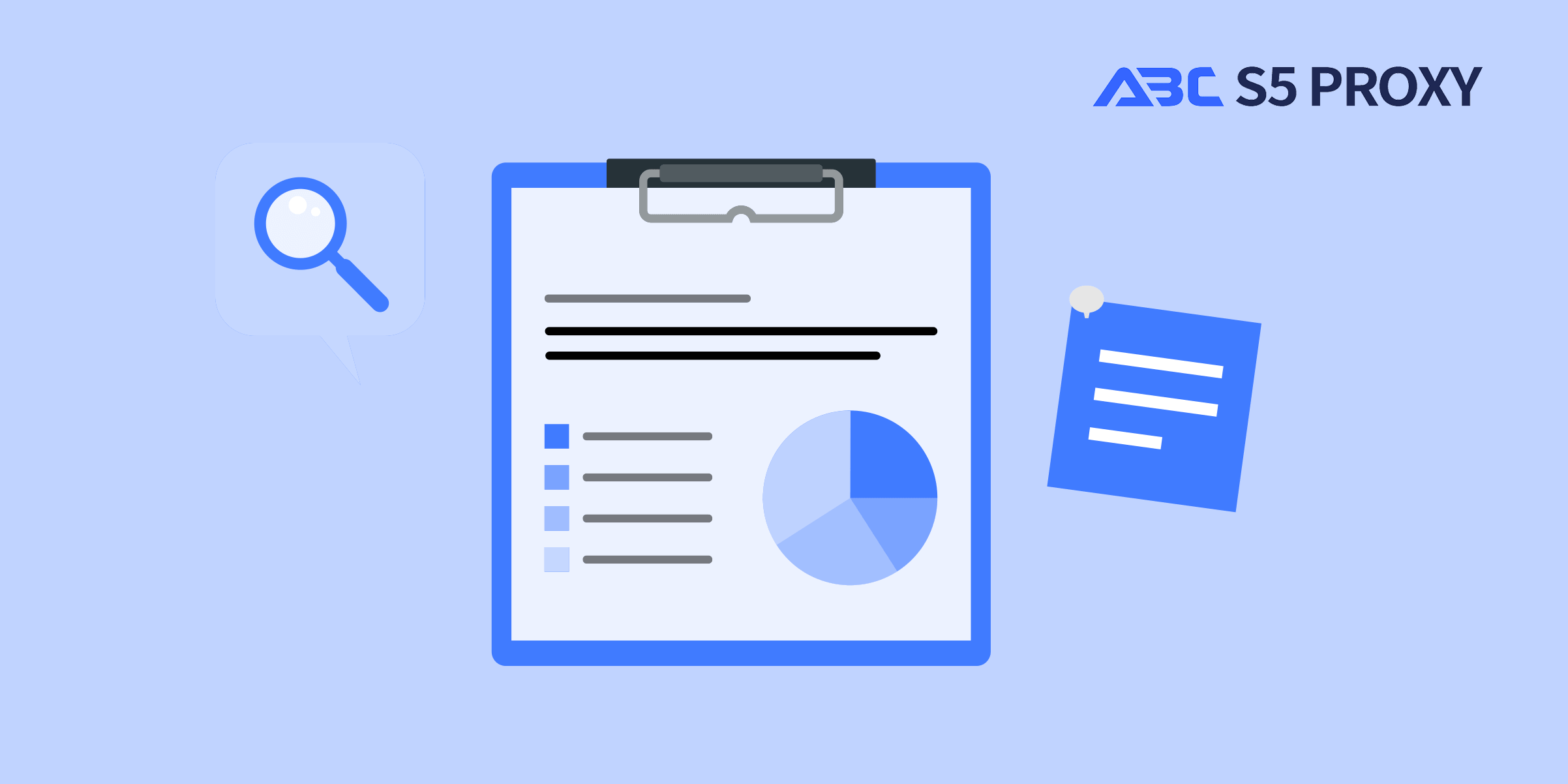Residential Proxies
Allowlisted 200M+ IPs from real ISP. Managed/obtained proxies via dashboard.

Proxies Services
Residential Proxies
Allowlisted 200M+ IPs from real ISP. Managed/obtained proxies via dashboard.
Residential (Socks5) Proxies
Over 200 million real IPs in 190+ locations,
Unlimited Residential Proxies
Unlimited use of IP and Traffic, AI Intelligent Rotating Residential Proxies
Static Residential proxies
Long-lasting dedicated proxy, non-rotating residential proxy
Dedicated Datacenter Proxies
Use stable, fast, and furious 700K+ datacenter IPs worldwide.
Mobile Proxies
Dive into a 10M+ ethically-sourced mobile lP pool with 160+ locations and 700+ ASNs.
Scrapers
Collection of public structured data from all websites
Proxies
Residential Proxies
Allowlisted 200M+ IPs from real ISP. Managed/obtained proxies via dashboard.
Starts from
$0.6/ GB
Residential (Socks5) Proxies
Over 200 million real IPs in 190+ locations,
Starts from
$0.045/ IP
Unlimited Residential Proxies
Unlimited use of IP and Traffic, AI Intelligent Rotating Residential Proxies
Starts from
$1816/ MONTH
Rotating ISP Proxies
ABCProxy's Rotating ISP Proxies guarantee long session time.
Starts from
$0.4/ GB
Static Residential proxies
Long-lasting dedicated proxy, non-rotating residential proxy
Starts from
$4.5/MONTH
Dedicated Datacenter Proxies
Use stable, fast, and furious 700K+ datacenter IPs worldwide.
Starts from
$4.5/MONTH
Mobile Proxies
Allowlisted 200M+ IPs from real ISP. Managed/obtained proxies via dashboard.
Starts from
$1.2/ GB
Scrapers
Web Unblocker
Simulate real user behavior to over-come anti-bot detection
Starts from
$1.2/GB
Serp API
Get real-time search engine data With SERP API
Starts from
$0.3/1K results
Video Downloader
Fully automated download of video and audio data.
Starts from
$0.07/GB
Scraping Browser
Scale scraping browsers with built-inunblocking and hosting
Starts from
$2.5/GB
Documentation
All features, parameters, and integration details, backed by code samples in every coding language.
TOOLS
Resources
Addons
ABCProxy Extension for Chrome
Free Chrome proxy manager extension that works with any proxy provider.
ABCProxy Extension for Firefox
Free Firefox proxy manager extension that works with any proxy provider.
Proxy Manager
Manage all proxies using APM interface
Proxy Checker
Free online proxy checker analyzing health, type, and country.
Proxies
AI Developmen
Acquire large-scale multimodal web data for machine learning
Sales & E-commerce
Collect pricing data on every product acrossthe web to get and maintain a competitive advantage
Threat Intelligence
Get real-time data and access multiple geo-locations around the world.
Copyright Infringement Monitoring
Find and gather all the evidence to stop copyright infringements.
Social Media for Marketing
Dominate your industry space on social media with smarter campaigns, anticipate the next big trends
Travel Fare Aggregation
Get real-time data and access multiple geo-locations around the world.
By Use Case
English
繁體中文
Русский
Indonesia
Português
Español
بالعربية

Title: A Guide to Web Scraping: Understanding and Navigating Website Pages
In the digital age, web scraping has become an essential tool for extracting valuable data from websites. However, the process of scraping data can be challenging, especially when dealing with websites that have complex page setups. In this blog post, we will explore how to scrape web pages that are intricately structured and provide tips on navigating through them effectively.
Before diving into web scraping, it is crucial to understand the structure of the website pages you are dealing with. Websites can be built using various technologies, such as HTML, CSS, JavaScript, AJAX, and others. Each of these technologies plays a role in shaping the layout and functionality of the web pages.
When scraping data from a website, it is essential to identify the underlying structure of the page. This includes understanding how the data is organized, where it is located, and how it is loaded onto the page. By analyzing the HTML code of the website, you can gain insights into the page structure and determine the best approach for scraping the data.
1. Use Inspect Element: Most web browsers come with a built-in tool called Inspect Element, which allows you to view the HTML code of a webpage. By right-clicking on the page and selecting Inspect, you can explore the structure of the page, identify specific elements, and locate the data you want to scrape.
2. Identify CSS Selectors: CSS selectors are patterns used to select and style elements on a webpage. By using CSS selectors, you can target specific elements on the page, such as text, images, links, and more. Understanding CSS selectors can help you pinpoint the data you want to scrape accurately.
3. Handle Dynamic Content: Many modern websites use JavaScript to load content dynamically, meaning that the data is fetched and displayed after the initial page load. When scraping such websites, you may need to use tools like Selenium or Puppeteer to interact with the page programmatically and retrieve the dynamic content.
4. Implement Delay and Throttling: To avoid getting blocked by websites or triggering rate limits, it is essential to implement delays and throttling in your web scraping code. By pacing your requests and mimicking human-like behavior, you can scrape data without raising suspicion or causing disruptions.
5. Monitor Changes: Websites frequently update their layout and structure, which can break your scraping code. It is crucial to monitor the website for any changes and adjust your scraping code accordingly. Tools like Diffbot or Visualping can help you track changes and ensure that your scraping process remains robust.
Web scraping can be a powerful tool for extracting data from websites, but it requires a deep understanding of website structures and effective navigation techniques. By following the tips outlined in this blog post and mastering the art of scraping complex website pages, you can unlock valuable insights and streamline your data extraction process. Remember to always respect website terms of service and scrape responsibly to avoid legal issues. Happy scraping!
Featured Posts
Popular Products
Residential Proxies
Allowlisted 200M+ IPs from real ISP. Managed/obtained proxies via dashboard.
Residential (Socks5) Proxies
Over 200 million real IPs in 190+ locations,
Unlimited Residential Proxies
Use stable, fast, and furious 700K+ datacenter IPs worldwide.
Rotating ISP Proxies
ABCProxy's Rotating ISP Proxies guarantee long session time.
Residential (Socks5) Proxies
Long-lasting dedicated proxy, non-rotating residential proxy
Dedicated Datacenter Proxies
Use stable, fast, and furious 700K+ datacenter IPs worldwide.
Web Unblocker
View content as a real user with the help of ABC proxy's dynamic fingerprinting technology.
Related articles

Unlock Seamless Mobile Browsing with ABCproxy - Your Ultimate Mobile Proxy Solution
Looking for a reliable mobile proxy service? Check out ABCproxy for secure and seamless browsing on the go. Enhance your online privacy and unlock restricted content with our top-notch mobile proxy solution.

Unlocking the Power of ABCproxy: Your Ultimate Guide to the Best Proxy Server
Looking for the best proxy server solution? ABCproxy has you covered. Discover the top-notch features and benefits of using ABCproxy for secure and seamless browsing. Boost your online privacy and security with the best proxy server on the market.